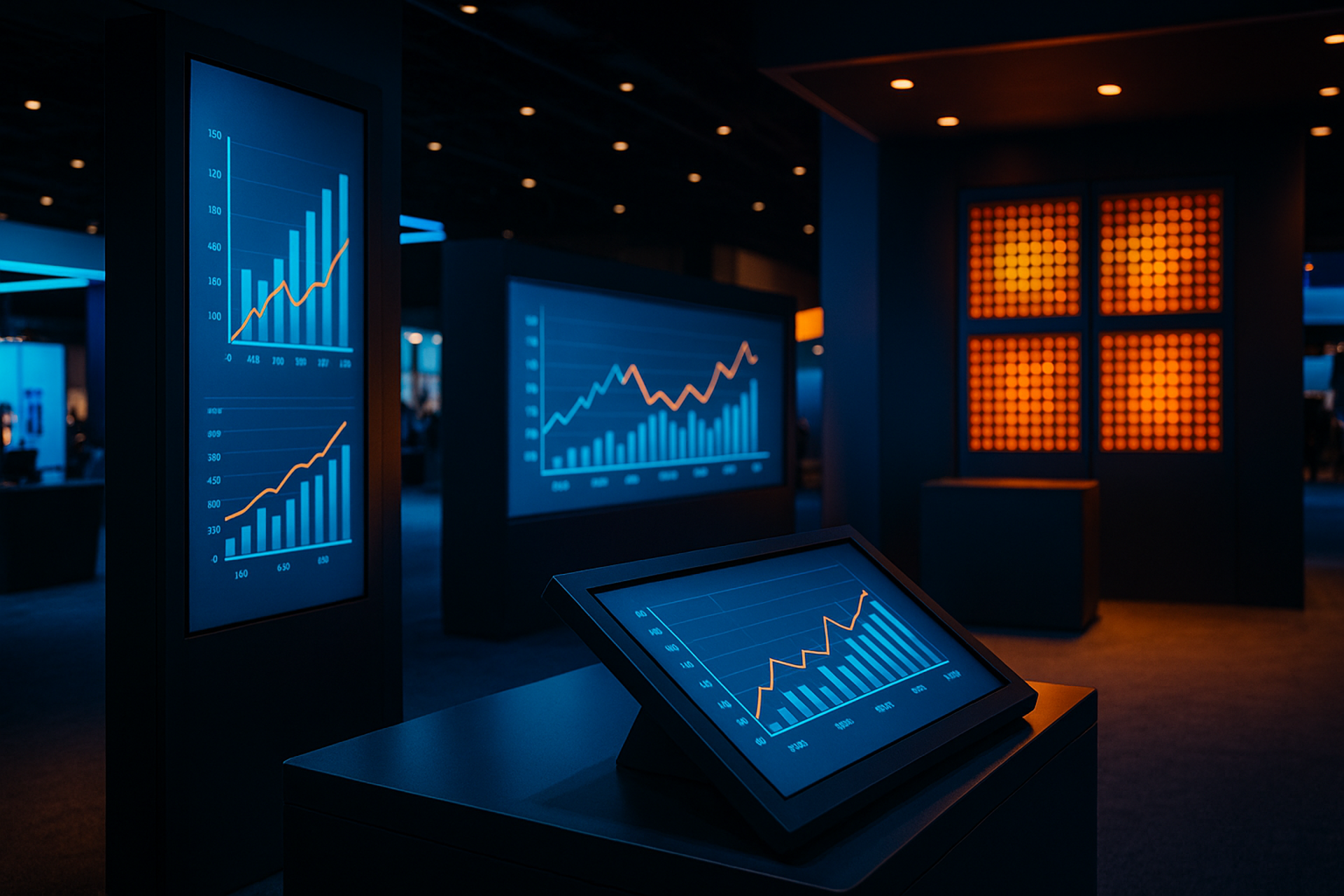When it comes to trade shows and events, “ROI” is one of those acronyms that gets tossed around like confetti. Everyone wants it. Everyone says it matters. But not everyone knows what it actually looks like—or how to measure it effectively in 2025.
Here’s the truth: ROI in 2025 goes far beyond counting badge scans.
If you're investing thousands (or millions) into trade shows, it's time to start measuring success with a wider lens—and smarter tools.
ROI Isn’t Just Leads Anymore
Yes, leads matter. But when you’re only measuring your event’s success by how many badges your team scans, you're missing the bigger picture. In today’s hybrid marketing landscape, trade shows do far more than generate names for a spreadsheet.
Smart brands are measuring things like:
- Brand awareness and visibility
- Customer engagement and dwell time
- Partnership activation and internal alignment
- Retention and upsell opportunities
- Social reach and content performance
- Experience-driven momentum that impacts sales long after the show floor closes
Think of ROI in 3 Dimensions
Rather than a single number, we recommend viewing trade show ROI in three dimensions:
1. Performance ROI
Did your booth function like it was supposed to? Was the tech reliable? Did the screens, lights, and interactives perform without a hitch? (Spoiler: this is where Stamm Media shines.)
2. Engagement ROI
Did people stop and interact? Did they sit through demos, explore your product, or share your booth online? You can now measure things like foot traffic, dwell time, content interaction, and sentiment.
3. Business ROI
Did the event contribute to closed deals, pipeline growth, or customer renewals? Sometimes, the best ROI isn’t a net-new lead—it’s a better relationship with an existing client who now sees your brand in a whole new light.
Why Traditional ROI Models Are Falling Short
In the past, ROI was often a binary calculation:Total revenue generated ÷ cost of the booth.Simple. But it leaves out the nuance—especially in high-consideration industries where deals take months to close and touchpoints add up.
Here’s what that old model misses:
- Long-term brand affinity
- Social amplification
- Employee or partner morale from being involved
- Competitive positioning
- Onsite content capture that fuels marketing for months
If you’re not tracking those elements, you’re only seeing half the story.
Smart Teams Are Expanding Their Metrics
Leading event marketers are shifting their mindset from “what did we get?” to “what did we create?”
That means measuring:
- How long attendees engaged with your content
- Whether your booth design pulled people in or pushed them away
- If your tech actually elevated your message—or just looked flashy
- How attendees moved, responded, and interacted with your space
And the good news? Tools now exist to measure all of that. (We’ll cover them in our next post.)
TL;DR: It’s Time for a Smarter ROI Strategy
If you want better ROI from your next trade show, stop thinking only in terms of sales and leads. Start looking at attention, behavior, perception, and performance—the things that fuel long-term growth and brand impact.
